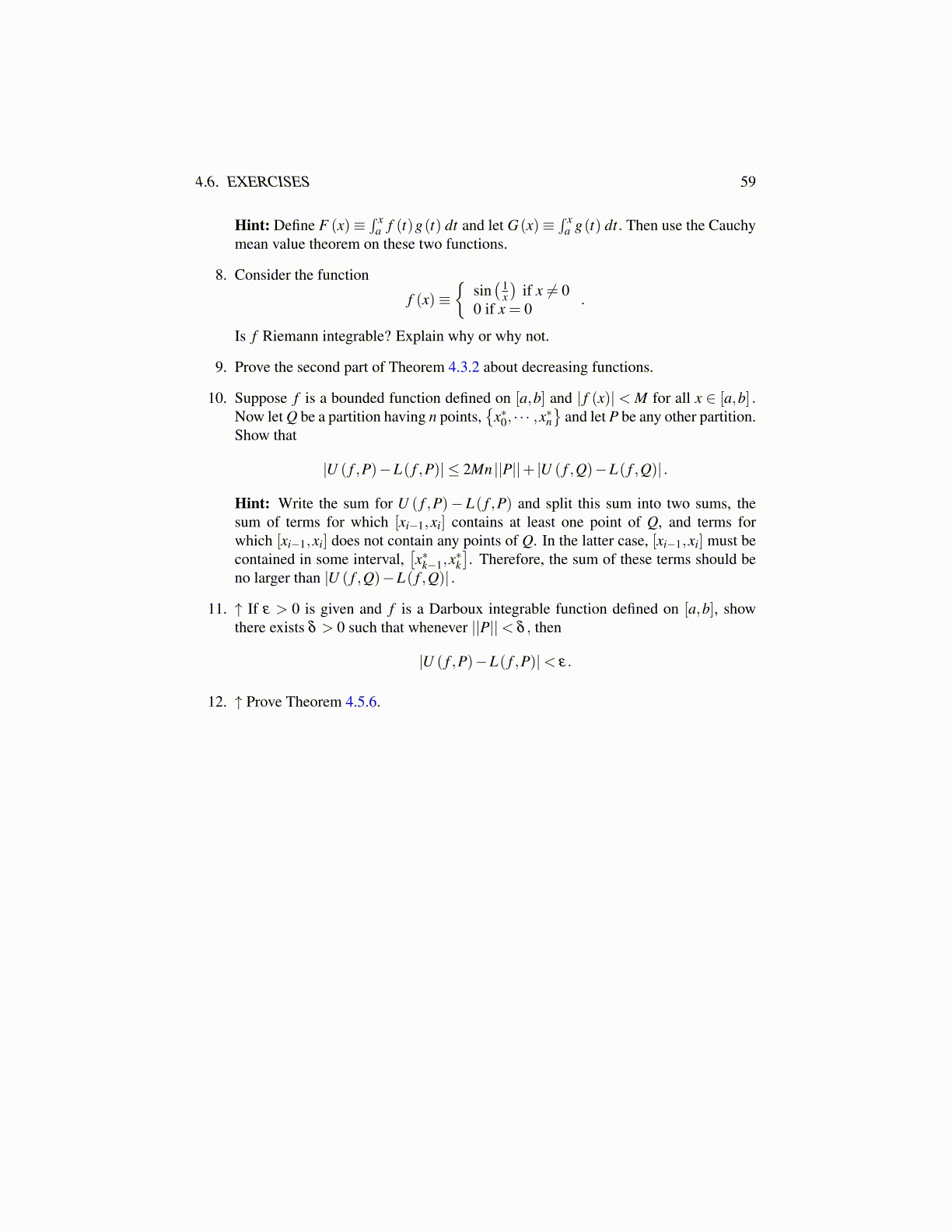
4.6. EXERCISES 59
Hint: Define F (x)≡∫ x
a f (t)g(t) dt and let G(x)≡∫ x
a g(t) dt. Then use the Cauchymean value theorem on these two functions.
8. Consider the function
f (x)≡{
sin( 1
x
)if x ̸= 0
0 if x = 0.
Is f Riemann integrable? Explain why or why not.
9. Prove the second part of Theorem 4.3.2 about decreasing functions.
10. Suppose f is a bounded function defined on [a,b] and | f (x)| < M for all x ∈ [a,b] .Now let Q be a partition having n points,
{x∗0, · · · ,x∗n
}and let P be any other partition.
Show that
|U ( f ,P)−L( f ,P)| ≤ 2Mn ||P||+ |U ( f ,Q)−L( f ,Q)| .
Hint: Write the sum for U ( f ,P)− L( f ,P) and split this sum into two sums, thesum of terms for which [xi−1,xi] contains at least one point of Q, and terms forwhich [xi−1,xi] does not contain any points of Q. In the latter case, [xi−1,xi] must becontained in some interval,
[x∗k−1,x
∗k
]. Therefore, the sum of these terms should be
no larger than |U ( f ,Q)−L( f ,Q)| .
11. ↑ If ε > 0 is given and f is a Darboux integrable function defined on [a,b], showthere exists δ > 0 such that whenever ||P||< δ , then
|U ( f ,P)−L( f ,P)|< ε.
12. ↑ Prove Theorem 4.5.6.